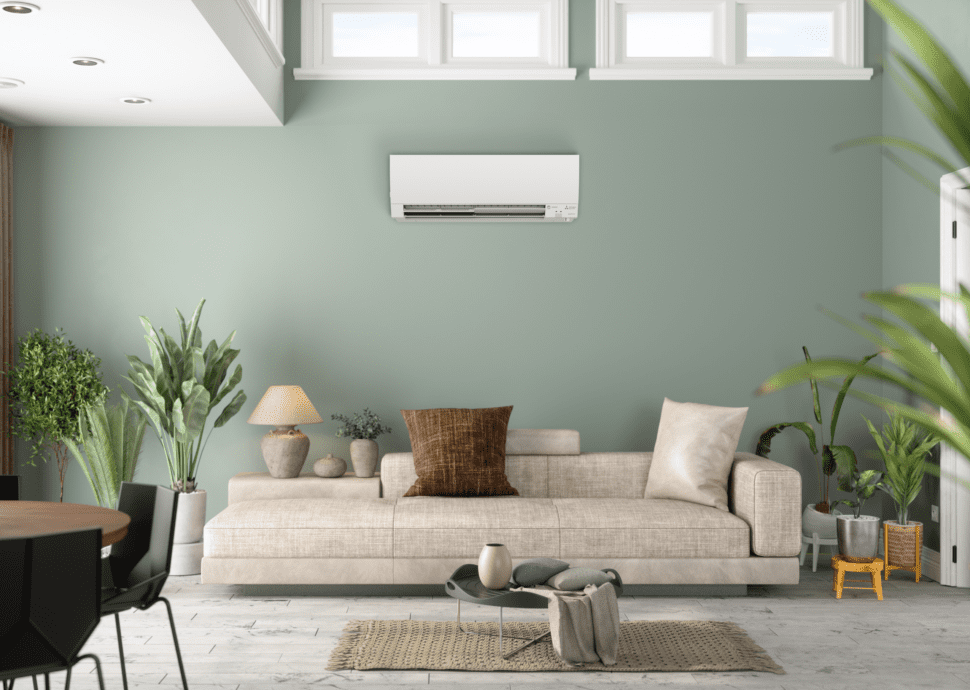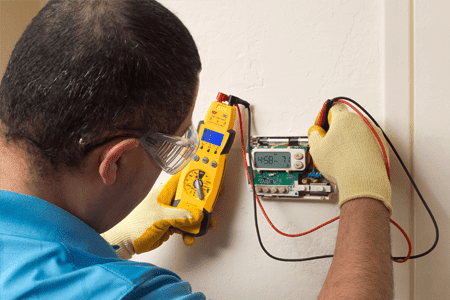
Glossary of Terms:
- Thermostat: A device that controls the temperature of your home by regulating your heating system.
- Programmable Thermostat: A thermostat that can be set to adjust temperatures automatically at specified times.
- Smart Thermostat: A Wi-Fi-enabled thermostat that can be controlled remotely via a smartphone app.
- Setback Temperature: A lower temperature setting used during times when you’re away or asleep to save energy.
- Energy Star: A government-backed program certifying products and systems for energy efficiency.
- HVAC: Heating, Ventilation, and Air Conditioning, the system that manages indoor climate and air quality.
- Zoned Heating: A system that divides your home into zones, allowing different temperatures in each area.
Why Optimizing Thermostat Settings Matters
Your thermostat is more than just a switch for your heating system. Proper thermostat usage can significantly reduce your energy bills, improve furnace efficiency, and enhance your overall comfort during the colder months. Poor thermostat habits, such as constantly adjusting the temperature or keeping it too high, can lead to higher costs and wear on your system. Learning to optimize your settings ensures both savings and comfort.
Top Tips for Winter Thermostat Optimization
1. Set an Ideal Temperature
According to the U.S. Department of Energy, the optimal indoor temperature for winter is 68°F when you’re home and awake. Lowering it by 7-10°F while you’re asleep or away can save up to 10% annually on heating costs.
2. Use a Programmable Thermostat
A programmable thermostat automatically adjusts the temperature based on your schedule. Example settings:
- Lower the temperature to 60°F when you leave for work.
- Raise it back to 68°F just before you return.
- Lower it again during the night while you’re asleep.
3. Upgrade to a Smart Thermostat
Smart thermostats offer advanced features, including remote control through a mobile app and the ability to learn your preferences. They can also integrate with energy-saving systems, ensuring you get the most out of your heating setup. If your system isn’t compatible, we can assist with a heating installation.
4. Avoid Extreme Adjustments
Cranking your thermostat to an excessively high temperature doesn’t heat your home faster—it simply overworks your system and wastes energy. Instead, make gradual adjustments and let your furnace do its job efficiently.
5. Zone Your Heating System
A zoned system allows you to control temperatures in different areas of your home. This is ideal for large homes or spaces with varying heating needs. Upgrading your system to include zoning can result in significant energy savings.
6. Maintain Your Heating System
A well-maintained furnace responds more effectively to thermostat adjustments. Schedule heating maintenance to ensure your system operates efficiently and lasts longer.
7. Use Energy-Saving Features
Many modern thermostats include eco-modes or energy-saving settings. Enabling these features optimizes energy usage while keeping your home comfortable.
Common Thermostat Mistakes to Avoid
To help you maximize efficiency and avoid unnecessary costs, steer clear of these common thermostat mistakes:
1. Frequent Manual Adjustments
Manually adjusting your thermostat throughout the day forces your furnace to work harder, wasting energy. Use a programmable or smart thermostat to automate settings.
2. Leaving It at a Single Temperature
Keeping your thermostat at one temperature all day wastes energy when you’re away or asleep. Setting it lower during these times saves money.
3. Ignoring Drafts and Insulation
Even optimized thermostat settings can fail if your home has drafts or insufficient insulation. Check for air leaks and seal them to maintain consistent indoor temperatures.
4. Setting It Too Low
While lowering the temperature can save energy, setting it too low can make your home uncomfortable and force your furnace to overcompensate when heating back up.
5. Poor Thermostat Placement
Thermostats placed near drafty windows or heat sources can provide inaccurate readings, leading to inefficient heating.
🔥 Recommended Thermostat Settings for Winter
| Time of Day | Recommended Temperature | Why It Works |
| Daytime (Home) | 68°F | Comfortable temperature for most activities while saving energy. |
| Daytime (Away) | 60-62°F | Reduces heating while the house is empty, lowering energy bills. |
| Night (Sleeping) | 60-65°F | Promotes better sleep and reduces heating costs overnight. |
| Returning Home | 68-70°F | Quickly restores comfort without overworking your furnace. |
🌟 Fun Facts About Thermostats
- Thermostats and Sleep: Cooler indoor temperatures, between 60-67°F, can improve sleep quality by helping your body regulate its temperature naturally.
- Oldest Thermostat: The first thermostat, invented in 1883, used a mercury bulb to control temperature changes.
- Energy Star Smart Thermostats: These devices meet strict energy efficiency guidelines and can save users an average of $50 annually on utility bills.
- Eco-Friendly Homes: Using a programmable thermostat is one of the easiest ways to reduce your home’s carbon footprint.
- Thermostat Myth: Contrary to popular belief, setting your thermostat to a very high temperature doesn’t heat your home faster.
🧐 FAQ: Common Questions About Winter Thermostat Settings
Q1: Can I use a smart thermostat with an older heating system?
Yes, most smart thermostats are compatible with older systems. If not, we can help with a heating installation.
Q2: Should I lower the thermostat when I’m on vacation?
Yes, lower the thermostat to around 55°F to save energy while preventing pipes from freezing.
Q3: Is it worth upgrading to a smart thermostat?
Absolutely. Smart thermostats improve efficiency, provide energy reports, and allow remote control, making them a valuable investment.
Q4: How can I tell if my thermostat is working correctly?
If your home has inconsistent temperatures or your furnace isn’t responding, you may need heating repair.
Q5: What’s the best way to save energy with my thermostat?
Use a setback temperature (7-10°F lower) when you’re asleep or away from home.
🧩 Quiz: Are You Using Your Thermostat Effectively?
Answer these Yes/No questions to find out:
- Do you use a programmable or smart thermostat?
- Do you adjust your thermostat to 68°F during the day?
- Do you lower the temperature by at least 7°F at night or when you’re away?
- Is your furnace responding effectively to temperature changes?
- Have you scheduled heating maintenance this year?
If you answered “No” to any of these questions, you might not be using your thermostat to its full potential. Contact us for expert advice or to upgrade your system.
The Role of Regular Maintenance
Even the most efficient thermostat settings won’t work if your heating system isn’t in good condition. Regular heating maintenance ensures that your furnace responds quickly and efficiently to thermostat adjustments. Maintenance also identifies potential issues, preventing costly breakdowns during the coldest months.

Take Control of Your Comfort This Winter
Your thermostat is a powerful tool for achieving comfort and savings in winter. By following these tips and keeping your heating system in top condition, you can enjoy a warm, efficient home all season long.
At Iceberg Mechanical Corp, we’re here to help with everything from thermostat upgrades to heating repair and maintenance. Contact us today to learn more or schedule an appointment. Let’s keep your home cozy and efficient this winter!


